 Chiyozuru Sadahide
Chiyozuru Sadahide
「千代鶴」は明治時代後期(20世紀初頭)、代々上杉家御用刀鍛冶の家に
生まれた加藤廣(かとうひろし)によって誕生しました。
その名は現在、皇居となるところにかつて千代田城が建っていたころ、
その上棟式の際、上空を鶴が三日三晩舞ったとの古言に由来しています。
切れ味はもちろんのこと、精魂込めた手仕事によって仕上げられた道具は、
使い込んだら消えてなくなる運命ながら、鑑賞、美術品の域に向上させられ、
明治・大正・昭和にわたり名品名作を遺し、不世出の名工「千代鶴是秀」と呼ばれるまでに至りました。
その千代鶴是秀より技術を学び「千代鶴貞秀」として認められた兵庫県の
鉋鍛冶・神吉義良より、三代目千代鶴貞秀にわたり、その心、技を受け継ぎ、
次世代につなぐものづくりをめざし、日夜励んでいます。
The name Chiyozuru originates in the later Meiji years (beginning of the 20th century) with Hiroshi Kato, born to a lineage of swordsmiths who served the Uesugi samurai clan for generations.
Legend has it that at the time of the ridgepole-raising ceremony for Chiyoda Castle, which is now the Imperial Palace in Tokyo, a crane flew overhead for three days and three nights. The name Chiyozuru refers to this legend — Chiyo from Chiyoda and zuru, a derivative of the Japanese word for crane.
Not only did Kato achieve an exquisite cutting edge on the tools he crafted by hand, but he elevated these tools — instruments that disappear as they are put to use — to works of art. One of the great kanna shokunin (Master Craftsmen of planes), Kato created masterpieces in the Meiji, Taisho and Showa periods and came to be known by the signature Chiyozuru Korehide.
Kanki Yoshiryo, a kanna (plane) bladesmith in Hyogo Prefecture, apprenticed with Chiyozuru Korehide, mastering the bladesmith techniques and earning his own Chiyozuru signature — Chiyozuru Sadahide. Sadahide passed the name onto his son, Chiyozuru Sadahide III, who works tirelessly to pass the spirit and techniques of master bladesmiths on to the next generation.




 Products
Products
千代鶴貞秀工房では基本的に日立のヤスキハガネ青紙1号を使用しております。
一段上の製品に対しては先代が残してくれたヤスキの特別なハガネを使用し、また、古いスエーデン鋼も入手し使用しております
鉋、小刀は一貫して手仕事で炭を使い鞴で赤めて火造り、銑(せん)やヤスリ等で削り、松炭を使い焼入れし一つ一つ丁寧に製作しています。
炭焼による手打ち刃物は先代より受け継がれてきました技法で作られています。
For premium blades, we use special Yasuki steel handed down by the shokunin (Master Craftsmen) who came before us. We use old Swedish steel, as well.
Kanna (planes) and kogatana (craft knives) are produced mostly by hand. The bladesmith forges the blade with intense attention to detail at each step of the process, using bellows to tend the charcoal fire, shaping the blade with files and other implements, and quenching the blade with pine charcoal.
We use the techniques passed down from generation to generation to hand-forge our blades in charcoal fire.
 Craftsmanship
Craftsmanship
鉋刃は甲、裏ともに曲面になっています。製作では常にねじれが出ますのでそのねじれを工程ごとに丁寧に取り除き、
それぞれの曲面を作っていきます。
工程ごとに決められた形があり、その形がしっかりできていないと先の工程で余分な手間がかかってしまいます。
最小限の力加減や、叩く回数、削りで仕上げていくことが肝心です。
そうして出来上がった鉋は、鉋台打ち職人の手で一つずつ丁寧に台に挿げられ、
木材の表面を平らにし、木艶を出し、長持ちさせる、
品格ある日本の建築技術の助けとなっています。
当工房では加工の大半を手仕事にて丁寧に行っております。
Kanna are curved on both sides of the blade. Forging and tempering will inevitably leave a twist in the metals. At each stage of bladesmithing, the bladesmith works meticulously to correct any twist in the blade and precisely craft the exact curvature desired for the specific kanna.
Each stage involves shaping the blade in a prescribed manner. Failing to properly shape the blade at one stage means extra work at later stages to correct the problem.
The essence of bladesmithing lies in forging a superior blade with the least possible amount of force, hammering, and grinding.
The finished kanna are carefully placed by hand in the dai (wood base) by an expert who has mastered dai craftsmanship. These excellent tools make it possible to produce polished, durable wood products, which support refined Japanese construction techniques.
 Shokunin (Master Craftsmen)
Shokunin (Master Craftsmen)
三木で鉋鍛冶職人として若くして成功を収めた神吉義良青年は、大阪で一本の鉋に出会います。
不世出の名工「千代鶴是秀」の鍛ったその鉋に魅せられ、弟子入りを志願します。通い弟子として許され日本一の鍛冶師の下で腕を磨きました。
三木に戻ってからも師のもとに通い、戦争などの辛苦を乗り越え、遂に弟子入りしてから18年後「千代鶴貞秀」の号を受け、「乱菊」「淡路の夕凪」など鉋の名作を生み出しました。
二代目千代鶴貞秀(神吉岩雄)への継承は、1990年、親から子へというものではなく、地元の有識者を含む第三者による評価、推挙で承認されました。
平成10年経済産業大臣指定伝統的工芸品 播州三木打刃物 伝統工芸士に登録され、同年「ABANA(北米芸術鍛冶屋協会)」に アジアで唯一の招待実演者として参加。 ABS(American Bladesmith Society)名誉会員に認定されました。
2019年、弟子の森田直樹(旧 千代鶴直秀)は、「三代目千代鶴貞秀」を襲名しました。
In his late teens, Kanki Yoshiryo — already an accomplished kanna bladesmith in his hometown of Miki in Hyogo Prefecture — would encounter an awe-inspiring kanna in Osaka that would change his life.
The blade, forged by Chiyozuru Korehide, one of the great kanna bladesmiths, so captivated Kanki that he implored the master to take him on as an apprentice. Eventually accepted by Chiyozuru as a day apprentice, Kanki honed his skills under one of the best bladesmiths in Japan.
Even after returning to Miki, he continued to visit his teacher in Tokyo to continue his training despite the hardships of war and other obstacles. Finally, after 18 years of apprenticeship, he succeeded to the master’s name, taking the name Chiyozuru Sadahide and creating such masterpiece kanna as the Rangiku and Awaji no Yunagi planes.
The succession of this signature to Chiyozuru Sadahide II (born Kanki Iwao) in 1990 was not simply a matter of automatic succession from father to son, but was based on the approval and recommendation of a wide circle of third parties, including local experts.
In 1998, he was registered as a Master of Traditional Crafts of Banshu Miki Blades designated by the Minister of Economy, Trade and Industry in Japan. In the same year, he was the only craftsman from Asia to present a demonstration at the Artist-Blacksmith’s Association of North America (ABANA). He is also an honorary member of the American Bladesmith Society (ABS).
In 2019, the pupil Morita Naoki (former Chiyozuru Naohide) succeeded to the name Chiyozuru Sadahide III.